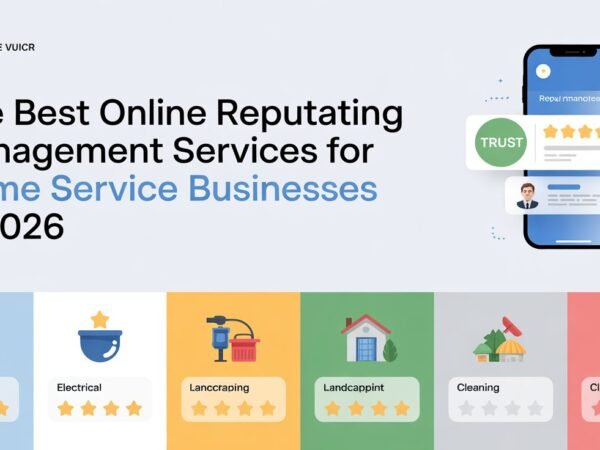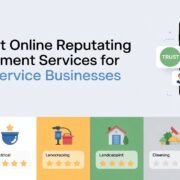You probably already know that happy customers are the secret sauce behind every successful business. But what if I told you that boosting customer happiness isn’t just about good vibes and smiles? It’s actually a measurable, manageable process—and once you get it right, it can fuel your growth, improve loyalty, and set you apart in a crowded market.
To truly boost customer happiness effectively, the first step is to understand your current standing. How happy are your customers right now? What’s driving their joy or frustration? And most importantly, what can you do to raise those happiness levels in ways that matter to them?
Let’s break it down into three parts: how to accurately measure customer happiness, how to interpret the numbers accurately, and how to take meaningful action that moves the needle. Ready to become a customer happiness pro? Let’s jump in.
Why You Should Care About Measuring Customer Happiness
You might be thinking, “Why bother measuring happiness? Isn’t it obvious if customers are happy?” The truth is that happiness is often subtle and nuanced. Your customers may appear satisfied on the surface, but they may still be harboring minor frustrations that erode their loyalty.
By measuring happiness, you gain clear, actionable insights instead of relying on guesses. It lets you:
- Identify pain points before they cause churn
- Recognize your happiest customers who can become brand advocates
- Tailor your product and service to meet customer needs better
- Track the impact of your initiatives over time
Additionally, companies that systematically measure and boost customer happiness tend to outperform their competitors in terms of retention, revenue growth, and brand reputation.
Step 1: How to Measure Customer Happiness
Measuring customer happiness isn’t about guessing or relying on gut feelings. It’s about using proven tools that gather honest, relevant feedback. Here are the main ways you can do it:
Customer Satisfaction Score (CSAT) — The Classic Pulse Check
CSAT is one of the most straightforward methods for measuring happiness. You ask customers to rate their satisfaction with a recent experience or purchase on a scale (usually 1 to 5 or 1 to 10). For example:
“How satisfied were you with your recent purchase?”
What makes CSAT powerful is its simplicity and immediacy. You receive real-time feedback immediately after key interactions, such as product delivery, customer support, or checkout.
How to use CSAT effectively:
- Keep the survey short (1 or 2 questions max).
- Ask it at meaningful moments (right after service or delivery).
- Segment your results by touchpoint or customer type to spot trends.
Net Promoter Score (NPS) — Measure Loyalty and Advocacy
NPS is a favorite for many businesses because it’s simple but predictive of growth. The question is:
“On a scale of 0-10, how likely are you to recommend us to a friend or colleague?”
Based on their answer, customers fall into three groups:
- Promoters (9-10): Your biggest fans who are likely to refer others.
- Passives (7-8): Satisfied but not enthusiastic customers.
- Detractors (0-6): Unhappy customers who could damage your brand.
Your NPS is calculated by subtracting the percentage of Detractors from the Percentage of Promoters. A higher NPS correlates with strong growth potential.
Tips for NPS:
- Follow up with an open-ended question, such as, “What’s the main reason for your score?” to gain a deeper understanding of the underlying reasons.
- Segment NPS by customer demographics or purchase history for deeper insights.
- Use NPS feedback to close the loop—reach out to Detractors and Promoters with tailored actions.
Customer Effort Score (CES) — How Easy Was It?
CES measures the effort required by a customer to resolve their issue or complete a task. The key question:
“How easy was it to get your issue resolved today?”
This is critical because customers often value ease and speed even more than delight. High-effort experiences have been proven to impact loyalty and satisfaction negatively.
How to apply CES:
- Use it mainly after support or service interactions.
- Track CES alongside resolution times and first-contact resolution rates.
- Identify friction points and invest in streamlining processes to enhance efficiency.
Monitor Social Media, Reviews, and Customer Support Data
Sometimes, your customers say the most honest things when you’re not asking. Keep an eye on:
- Social media comments and mentions
- Online reviews on platforms like Google, Yelp, and Trustpilot
- Support tickets and chat transcripts
Use social listening tools or manual monitoring to gather unfiltered sentiment. This qualitative feedback can reveal emerging issues or praise that you may not have been aware of.
Step 2: Interpreting Your Data — What Do These Numbers Mean?
Once you start collecting data, the next challenge is making sense of it. Here are a few principles to keep in mind:
Look for Trends Over Time
A single survey snapshot is helpful, but tracking trends helps you understand if your customer happiness is improving or slipping. Are your CSAT scores rising after a new product launch? Did NPS drop after a policy change?
Segment Your Data
Different customer groups often have very different experiences. Segment your results by:
- Purchase type or product category
- Customer demographics (age, location, industry)
- Interaction channels (phone, chat, email)
This helps you identify who’s happiest and who needs more attention.
Correlate Happiness with Behavior
Link your happiness scores with actual customer behaviors, like repeat purchases, churn, or referrals. This will help you prioritize actions that drive the most value.
Listen to the Open-Ended Feedback
Don’t ignore qualitative responses. These often contain gems of insight, whether it’s a minor tweak to your website or a significant issue with your onboarding process.
Step 3: How to Boost Customer Happiness Effectively
Now, here’s the fun part: applying what you’ve learned to make customers happier and more loyal. Here are strategies that work:
Act on Feedback Quickly and Transparently
When customers share feedback, especially negative, it’s your chance to show you care. Respond promptly and transparently. If there’s a known issue, communicate what you’re doing to fix it.
People want to know their voices matter—this builds trust and improves happiness.
Personalize the Customer Experience
Generic experiences no longer suffice. Use your customer data to tailor interactions:
- Recommend products based on past purchases
- Customize emails and offers
- Remember preferences and previous issues
Personalization makes customers feel valued and understood, which naturally boosts happiness.
Simplify and Streamline Your Processes
High effort kills happiness. Audit your customer journey to find and remove friction points. Common culprits include:
- Complicated checkout
- Hard-to-find return policies
- Long wait times for support
Make it as easy as possible for customers to do business with you.
Empower and Train Your Team to Deliver WOW Moments
Your customer-facing teams can make or break happiness. Train them not just on procedures but on empathy and problem-solving.
Encourage going the extra mile. A slight personal touch or a simple apology can turn frustrated customers into lifelong fans.
Reward Loyalty and Celebrate Customers
Everyone likes to feel appreciated. Implement loyalty programs, exclusive offers, or simple thank-you gestures to show appreciation.
Celebrate milestones like anniversaries, birthdays, or repeat purchases. These efforts demonstrate that you view customers as more than just transactions.
Set Clear Expectations and Deliver Consistently
Unmet expectations breed dissatisfaction. Be upfront about shipping times, pricing, and policies.
If something changes, communicate early. When you consistently deliver on promises, customers feel confident and happy.
Leverage Technology but Keep It Human
Automation can expedite responses and minimize errors. Use chatbots for simple questions, but ensure that customers can easily reach a live representative when needed.
Strike a balance between efficiency and empathy to create a seamless yet warm experience.
Build a Community Around Your Brand
Create spaces where customers can connect, share experiences, and receive support, such as forums, Facebook groups, or branded apps.
Feeling part of a community fosters emotional loyalty, one of the strongest drivers of happiness.
Step 4: Make Customer Happiness a Habit, Not a One-Off
The journey to happier customers is an ongoing process. Here’s how to embed it in your company culture:
- Regularly schedule customer happiness surveys.
- Share results across teams and celebrate wins.
- Set measurable goals to improve CSAT, NPS, and CES.
- Encourage cross-department collaboration to solve issues.
- Stay curious and continuously innovate based on customer insights.
Ready to Transform Customer Happiness into Business Growth?
At Nudge, we understand that measuring and boosting customer happiness isn’t just about collecting data—it’s about creating meaningful, personalized experiences that drive loyalty and growth.
Our AI-powered personalization platform empowers marketing teams to deliver 1:1 user experiences by analyzing real-time behavioral signals and automating UX decisions. With features like dynamic gamification, contextual nudges, and seamless integration,
Nudge helps you turn insights into action, enhancing customer satisfaction and retention. Don’t just measure happiness—actively cultivate it.
Experience firsthand how Nudge can elevate your customer engagement strategy. Book Demo Now
Do Read: Why MultiCharts Is the Smart Choice for Depth of Market Trading













